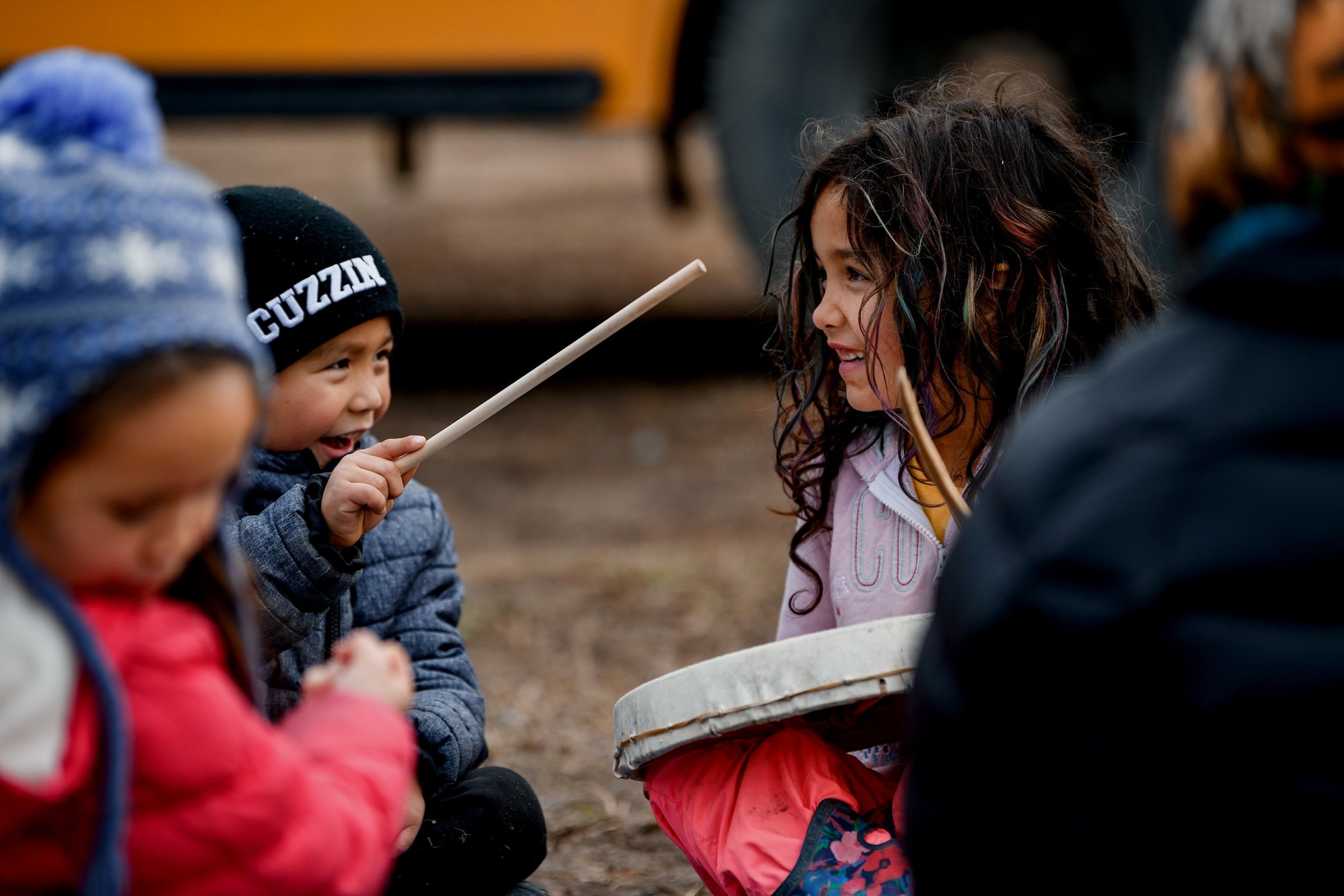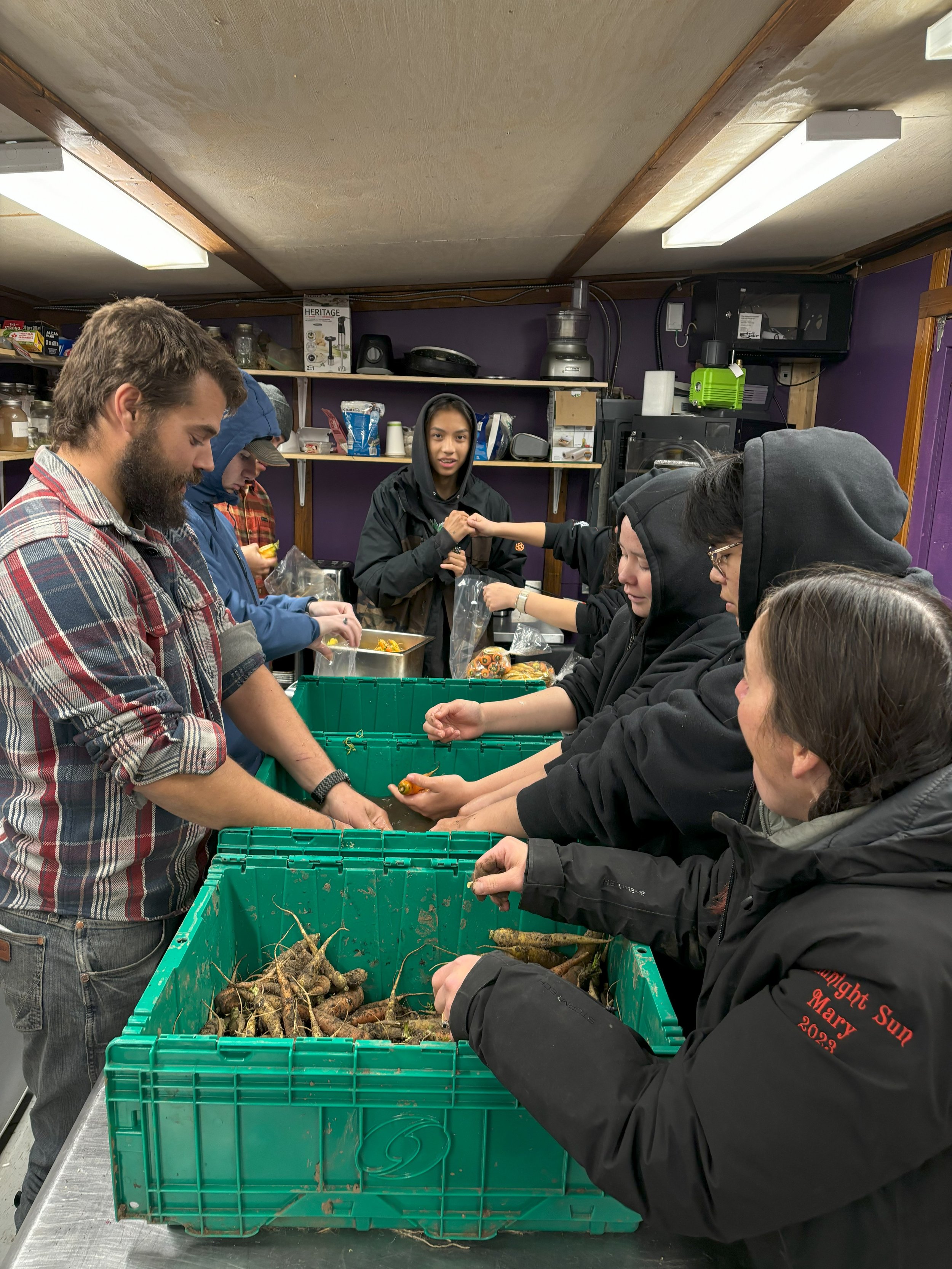
“The Framework and Action Plan illustrate how Yukon First Nations are not just crucial partners but the best suited to govern education on their Traditional Territories.”
- Melissa Flynn, Executive Director FNSB
On November 1, 2023 the First Nation Education Commissions (FNEC) released We Are Our Language - a Framework and Action Plan that guide the revitalization of Yukon First Nations languages within Kindergarten to grade 12, The First Nation School Board will be leading this work in our 11 Yukon public schools.
The Voices of our Language Holders
Their voices are the heart of our communities. We honour the stories, challenges, and triumphs of our language teachers—their work is vital in keeping Indigenous languages alive and thriving.
First Locally-Developed Course Established Under First Nation School Board
We hold up our Educators, Champagne and Aishihik First Nations Partners, and learners of Dakwä̀kä̀da for breaking trail with Food Sovereignty 12 - a high school course focused on food sustainability.
“It’s a place I’ve never been before. It’s quite something to see all those mountains, seeing how our ancestors travelled over that and how long it would take them. I’m going to make sure I do it again…”
— Logan Kyikavichik, Student
This is what education can look like when we enter into community and authentically work with families and Elders to learn what education means to them.
After months of preparation and gaining various certifications, Chief Zzeh Gittlit students travelled more than 500 kilometres by skidoo on the Dagoo T’aii (Over the Mountain People Trail) in the spring of 2024.
They left Teechik (Old Crow) on March 27, travelling up the Ch'oodèenjik (Porcupine River), through Chiitsiighe’ (Salmon Cache), Mason Hill, Zzeh Gwatstal (La Pierre House) and all the way to Vihshraii Niivyaa (Curtain Mountain) cabin, which is the half way point. They continued on through the Lachute River, over the pass to Ddhan Zhithan (Stoney Creek) and arrived in Tetl’it Zeh (Fort McPherson) on March 30. After a few days gathering with family and community, they hit the trail back, returning to Teechik (Old Crow) on April 3.
Listen to CBC Reporter Leonard Linklater speak with Land and Language Connector Charyl Charlie and Learner Logan Kyikavichik in Teetl’it Zzeh (Fort MacPherson) before starting the trail back to Teechik (Old Crow).
A big mahsi' choo to everyone in community and funders who made this trip possible.
Video credit: Caleb Charlie
Let's learn how to count in Dän k'e!
Check out this resource to help you master counting in Dän k'e.
Land and Language Learning Tools
Support for educators and others to help bring culture, language and the land “into the classroom” - or better yet, bring the classroom outside.
What’s On Your Drum?
This video, with FNSB Director, drum-maker, and drummer Erin Pauls explains that drums are used for ceremony and celebration, so we are always mindful of the love and intention put into making them.
Yukon First Nations drummers decorate their drums with representations of things closest to their hearts. “People paint something that is really meaningful to them, something that gives them good intentions in their heart and makes them feel happy,” Erin says. “That way we are surrounded with all that love whenever we use our drums.”
As a practice of gratitude and connection, offer your Learner a blank sheet of paper with a circle on it (representing the face of a drum). Ask them to draw their own drum design.
“We Are A Circle”
Grade 1 teacher at Grey Mountain Primary, Kathleen Coventry, wrote and choreographed a beautiful land acknowledgement song called “We are a Circle” that unites the school in its commitment to walking the path of reconciliation. The whole school now performs this song at all assemblies and other school events, using hand and body movements with each line. You are welcome to use this song and/or change it to suit your community.
WE ARE A CIRCLE
We are a circle
All connected
To each other
On this land
We are Grey Mountain
We’re the Yukon River
With every creature
Hand in hand
Ta’an Kwach’an Council
Kwanlin Dun First Nation
We say Thank You
You share your land
Shä̀w níthän and Kwä̀nä̀schis
Shä̀w níthän and Kwä̀nä̀schis
Shä̀w níthän and Kwä̀nä̀schis
We are a circle
We are a circle
We are a circle







